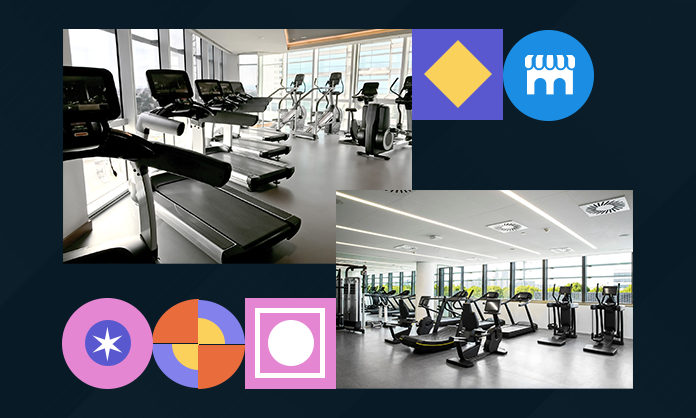A new client just signed up for your service through your online platform. Now, as a business, it’s your responsibility to make their decisions the best one. But how? Let’s understanding client onboarding process.
The answer: Through a proper client onboarding process.
However, crafting the best client onboarding process isn’t easy. Once your client has signed up, you should do everything you can to make the onboarding process smooth and worthwhile for your clients.
In this article, we have broken down the process into seven steps. We have also helped you understand how to break it down into different parts.
Client Onboarding Process: A 7-Step Process
It’s important to stand out when onboarding clients by making it more than just a transactional relationship. You have tried for months to onboard that client, and they have responded to your calls, and now they are ready to do business.
Set a Clear Expectations
However, onboarding clients to your service system can take time and effort. But it’s not impossible to get the right results. You have to start by setting clear expectation. Here are two things you’ll do –
Reassure Your Client: the first feeling you need to deliver is the feeling of reassurance. Make your customers feel they have made the right decisions by choosing your services.
Set clear Expectations: outline what your agency will provide and the uncertainties that may or may not arise throughout the partnership. It’s important to keep the communications and expectations transparent from the get-go.
For agencies serving in the B2B landscape, you might be dealing with top-tier companies. It’ll help start with a token of appreciation you will send to your client. This may not seem necessary since the relationship is transactional. But it’s the things on top of the service you provide that makes you stand out.
The step in your client onboarding process must include a formal piece of communication through mail. It should outline all the expectations you will fulfill, as business uncertainty might arise throughout the journey. In addition, it’s also important to introduce your points of contact for queries and solutions. The mail should also include a clear timeline for the entire service.
Design Client Onboarding Questionnaire
Since you are onboarding your client, it’s safe to assume you have already done your first round of client assessment. However, the preliminary round of assessment may not reveal what your client may be looking for through this partnership. That’s why you start with another round of questionnaires to delve deeper into what your clients want.
A good client onboarding process always includes a detailed questionnaire series where you try to understand what your clients want. This helps you understand if your existing assets are capable of meeting those expectations.
The onboarding questionnaire will also help you know if your agency needs to work on your internal assets to provide the service you have promised as an agency.
For a small business that’s low on resources, you can use a Google Form or similar free survey platforms to build these questionnaires. Then you can send them out to the clients.
Here are some common touchpoints to remember when building your questionnaire –
- What are your product and service goals (overall)?
- What KPI is a business targeting to meet in the next six months or a year?
- Is there any pre-existing resource to help you out?
- What are some examples of the (add service line) that you like?
- What is your ICP (Ideal Customer Profile)?
- Who will be your team’s main point of contact for us to reach out to?
- Who are the key stakeholders in your business?
- How will our service or product help you turn your ICP into customers?
Once you build these sets of questions and hand them to your customers, you’ll have answers regarding how you can provide them with the value they need. The best customer onboarding process involves understanding all these points first.
Build Your SLA
For some service agencies, their contract may not often outline the parties responsible for the timelines and due dates. In that case, those businesses have to create an SLA (Service Level Agreement).
This documentation requires you to put in all the data you have gathered from the onboarding questionnaire. Create your terms of engagement, engagement terms, etc. If the contract you built outlines the specifics of the service, then the SLA must outline who, how, and when you’ll deliver them.
A good example would be – if your team of IT experts is helping a client work on their internal network system, then the SLA should outline when and how you’ll deliver the service.
This should align with your client’s timeline and quality expectations from your services.
Project Kickoff Meeting
Your client onboarding process must also have a project kickoff meeting. Yes, you have spent a significant amount of time with the clients to understand their expectations. However, you must have a meeting where you’ll discuss with the client how you’ll function together and how the project is going to start.
It’s best to kick off the project with a client onboarding call. Here are things you can expect to do in this call –
- First, introduce yourself and your team.
- Determine how everyone must communicate and receive the product or the service. You can use Slack, Emails, or similar tools.
- Establish the project scope and your goals.
- Outline how you will collaborate, and what will be the flow of work and delivery.
- Present your SLA.
- Provide your client with the necessary resources and information like contact information, project management tools, and several other things.
During the kickoff call, start with the expectations set when the client onboarding process starts. This will help you start right off the bat. With this you have an opportunity to confirm both teams are aligned on the strategy and service goals you have while digging into the projects.
Post-Kickoff Internal Meeting
The next step in the client onboarding process involves a post-kickoff internal meeting. The previous meeting was about aligning your client with your internal team and building a comfortable working environment.
This one will help you set the project in motion. In addition, you’ll also visualize potential roadblocks and answer different questions raised by the clients.
No, there’s no need for this step of the onboarding process to be overwhelming. As an agency providing the service, your goal should be to collaborate on the strategy and use the skills of your internal teams to solve problems.
Take this moment as an opportunity to brief your team about the scope of the project, assign tasks and outline expectations for each team and team individuals.
This is also the moment to observe your internal point of contact and how they are receiving and responding to clients’ requests.
Routine Follow Ups are a Must
Take your client through every step of the process when your team is working to provide them with a solution. That’s why it’s important to maintain routine follow-ups. If you have to arrange meetings and provide your clients with a weekly or biweekly update on how you’re handling a project, then do so.
Use these meetings as points where you provide your client with valuable updates on how you’re handling client updates. This allows you to stay on top of your clients’ m ind and gives you the opportunity to upsell your services. It can also increase upsells.
A good way to do this is to summarize your action items as per the strategy and send emails to your clients regarding the updates. This means that the customer has a concrete takeaway from the meeting in the process.
While providing all those updates, don’t forget to talk about the project deliverables and outstanding action items of the project.
So, what does a weekly update look like if you were working as an ad-hoc marketing assistant to a client? Here are a few examples –
- A list of social media and blog posts published for the clients.
- Which posts can the client expect to get delivered in the coming week?
- List down any outstanding content approval you have from the client.
- Proprietary data and the subject matters that you need access to for your upcoming projects.
By providing these updates, your agency aligns the work process with the customers’ expectations. They can also work on potential roadblocks.
Optimize Onboarding Experience
There might be some gaps in the onboarding experience and as a business, you must attend to those mistakes. These gaps keep coming as the businesses scale at a steady pace. Under such circumstances, your business must optimize onboarding to meet client requirements.
The gaps are better understood through follow-up meetings where you collect feedback and insights about what the client is missing. Aks your teams to note down any concerns that the client has regarding the service.
After gathering all the issues, you can have your team look into them. They can analyze the gaps and fulfill them as per service requirements at a later date. If those requirements are more important, you can also work on them simultaneously as the project progresses.
Client Onboarding Tools
There are several client onboarding tools and softwares you can use in a small agency. Pendo, WalkMe, UserFlow Inc, WalkMe, Rocketplane, Appacues, GUIDEcx, ClientSuccess, and Whatfix are some of the great tools for onboarding your clients.
However, it’s important to remember that this onboarding can be done virtually or in person. Depending on the type of project you are handling, it’s best to optimize your strategies to make the onboarding process even smoother.
For More Business Related Articles Click Below!!!




Leave A Comment